Papers by Maria Chiara Liguori
… : proceedings of the VAST …, 2002
Información del artículo From Museum to Museum: the virtualisation of daily life museums.

Musei, pubblici, tecnologie; Valentina Gensini (a cura di), 2020
Capita spesso che spazi storici, risalenti ad epoche più o meno lontane, si ritrovino con il temp... more Capita spesso che spazi storici, risalenti ad epoche più o meno lontane, si ritrovino con il tempo ad essere modificati, svuotati, trasformati, diventando quasi irriconoscibili. E’ questo anche il caso dello Studiolo di Isabella d’Este, presso il Palazzo Ducale di Mantova, che, alcuni decenni dopo la morte della sua proprietaria nonché ideatrice, inizia a cambiare drasticamente in seguito alla vendita di buona parte delle sue collezioni d’arte ed antiquariato ed allo spostamento dei suoi arredi e decori in altre sale del palazzo. Stiamo parlando, in questo caso, non di un semplice interno domestico nobiliare, ma di una delle istanze più coerenti ed elaborate di studiolo personale rinascimentale e di autodeterminazione femminile mediata dalla cultura. Solo la tecnologia digitale, con le sue molteplici possibilità, può permettere la restituzione di un simile spazio culturale, tentando di avvicinarsi in qualche modo alla sua complessità. Non solo, infatti, molti dei suoi contenuti originari sono andati dispersi e non se ne ha più traccia, ma anche oggetti ed informazioni ancora recuperabili si sono ammantati di un ampio margine di incertezza per quel che riguarda la corretta collocazione, la permanenza all’interno dello studiolo, la loro trasformazione nel tempo. Si pensi, per esempio, ai rivestimenti lignei ad intarsi figurativi presenti nella stanza detta Grotta che, spostati e poi ricollocati, hanno subito varie integrazioni ed adattamenti di cui non si hanno informazioni complete. Il progetto Isabella d’Este Virtual Studiolo ha come obiettivo proprio quello di cercare di rendere al fruitore contenuti e complessità dello Studiolo di Isabella.
Web3D '20: The 25th International Conference on 3D Web Technology, 2020
As the first virtual reconstructions began to also spread the desireto create three-dimensional v... more As the first virtual reconstructions began to also spread the desireto create three-dimensional virtual galleries has arisen. Within theframework of the I-Media-Cities Horizon 2020 project a virtualgallery tool has been created; it can generate itself dynamicallyand in real-time starting from the selections performed on theaudiovisual contents of the platform.
Storia e Futuro, Rivista di storia e storiografia on line, n. 51, 2019
Immersive VR for Cultural Heritage is still not so widespread. However, studies and r... more Immersive VR for Cultural Heritage is still not so widespread. However, studies and reflections are starting to emerge on how to best exploit it and what benefits it can bring to the sector. The present contribution aims to add a further piece to this common reflection on the topic through a case study dedicated to a VR application about a historical environment, part of a domestic 1930's interior, and to an initial analysis of the results of the evaluation questionnaire distributed during some public events, where the applicationwas presented.
EVA2019 Florence, V. Cappellini (Ed.), Firenze University Press, 2019
Digital Cultural Heritage can often take great advantage from 3D reconstructions. 3DWeb can be co... more Digital Cultural Heritage can often take great advantage from 3D reconstructions. 3DWeb can be considered as a great opportunity for communicating this kind of contents, both as reconstructions relevant in themselves or as a tridimensional portal towards databases and other cultural resources. Often cultural environments are full of details, even long commemorative texts, as in the case of the Santo Stefano Lapidarium. In these eventualities, a good management of the 3D assets and a smart optimisation are of relevance.

Digital Humanities Quarterly, 2019
Among the most elaborate and coherent instances of Renaissance self-fashioning and female self-de... more Among the most elaborate and coherent instances of Renaissance self-fashioning and female self-determination through culture was a suite of rooms designed by Isabella d’Este in what is now the Ducal Palace museum of Mantua, Italy: a full-blown personal studiolo (study) and an adjoining smaller chamber she called the grotta (grotto). Isabella’s studiolo is a regular point of reference in the study of Renaissance history and art, yet for centuries it has been accessible only in dispersed pieces and in spaces depopulated of major works and artefacts. Digital technology offers the possibility of creating a “remastered” studiolo, a virtual space in which both visual and acoustic elements may be enhanced with respect to previous attempts at its representation. At the same time, historical uncertainty about numerous details in the arrangement of the objects in this collection requires a high level of flexibility in the digital remix, allowing for the programming of a customisable virtual environment. In anticipation of the project’s full construction and in order to facilitate discussion with potential users about the Virtual Studiolo’s backward design, the authors have developed a concept-demonstration video within the open-source Blender environment (www.blender.org). Among the concerns we aim to address in this phase of the project is how to combine historical accuracy, emotional power, and creative possibilities for users. This case study presents some of the opportunities, constraints and challenges we confronted during the production of our video as we strove within the Blender open environment for a result that will be historically accurate, emotionally compelling, and creatively flexible.
Sessantotto. Luoghi e rappresentazioni di un evento mondiale, M. Dondi, S. Salustri (a cura di)Publisher: Edizioni Unicopli, Milano, 2018

in Pompei. Insula IX 8. Vecchi e nuovi scavi (1879-); Publisher: Ante QuemEditors: Antonella Coralini, 2018
La cosiddetta archeologia virtuale, espressione del Virtual Cultural Heritage, vede la definizion... more La cosiddetta archeologia virtuale, espressione del Virtual Cultural Heritage, vede la definizione delle sue linee guida già nei primi anni Novanta del secolo scorso. Paul Reilly individua come punti chiave la registrazione degli scavi e la ripetibilità degli stessi attraverso modelli tridimensionali, ipertesti e soluzioni multimediali. Dieci anni dopo, la definizione acquista ulteriore respiro, arrivando a comprendere l’applicazione di metodi di visualizzazione e presentazione di “ricostruzioni” di ambienti del passato – edifici, paesaggi e artefatti inclusi. Il concetto si espande, quindi, verso una integrazione di elementi che permettano la trasmissione sempre più fedele della complessità dei contenuti, spostando l’attenzione dal singolo luogo all’ambiente con tutti i suoi elementi, aiutandosi in ciò con l’impiego crescente di banche dati. Il passaggio più recente e sentito è quello che dovrebbe andare dal laboratorio e dallo studio del ricercatore verso l’esterno, e sempre più cresce l’importanza del momento comunicativo e di impegno didattico. Il laboratorio Vis.I.T. del CINECA ha avuto modo di sperimentare tutte queste transizioni direttamente, affrontandone via via problemi e sfide.
Conference: 1st International Conference on VR Technologies in Cultural Heritage (VRTCH'18), Mihai Duguleana, Marcello Carrozzino, Matjaz Gams (Eds.), Brasov (Romania), 29-30 May 2018, Springer, 2018
The paper aims to explore new methods of re-contextualization of artworks in their original setti... more The paper aims to explore new methods of re-contextualization of artworks in their original settings based on 3D reconstruction and 3D Web through a case-study. It concerns a cycle of Medieval frescoes, detached from the walls of a monastery in Umbria, Central Italy, altered by numerous and some very recent renovations. The various fragments of the cycle of frescoes are preserved in various museums, mostly in the United States.
EVA 2018 Florence, V. Cappellini (Eds.), Proceedings of EVA 2018 Florence, 9-10 May, Firenze University Press, 2018
Since its opening, the Museum of the New Towns, housed in the Palazzo di Arnolfo in San Giovanni ... more Since its opening, the Museum of the New Towns, housed in the Palazzo di Arnolfo in San Giovanni Valdarno, has dedicated a particular attention to the relationship with its audiences. In this context, the video "Il piccolo Masaccio e le Terre Nuove" has the purpose of bringing children and young people, in particular, closer to the museum main themes. The video presents a series of very different techniques, such as live shots, taken also by drone, Computer Graphics, 2D drawings executed with a tablet, drawings sketched with traditional techniques, such as India ink and watercolours, and digital videos taken from Google Earth.
Conference: Conferenza GARR 2017 - The data way to Science - Selected Papers Venezia, 15-17 novembre 2017 - ISBN: 978-88-905077-7-9 © 2018 Associazione Consortium GARR, 2018
Il progetto europeo I-Media-Cities ha come obiettivo quello di dare nuove possibilità di accesso ... more Il progetto europeo I-Media-Cities ha come obiettivo quello di dare nuove possibilità di accesso al Pa-trimonio audiovisivo delle cineteche e archivi europei. Grazie ad innovativi strumenti di ricerca, decodifica au-tomatica di immagini in movimento ed annotazioni automatiche di metadati, diventa possibile esplorare le cit-tà da prospettive finora inedite.

in Pier Luigi Capucci, Giorgio Cipolletta (eds.), The New and History art*science 2017 Conference, Noema, Ravenna, ISBN 978-88-909189-7-1, 2018
Virtual heritage does not concern only the study and preservation of our past by means of new dig... more Virtual heritage does not concern only the study and preservation of our past by means of new digital tools, but it regards also the creation of new cultural objects, that can be shared and “augmented” by actively engaging larger audiences and re-creating new virtual heritage objects.
In this paper the Visit Lab experience, Cineca department for data ViSualization through Information Technology, is presented through an overview among the most significant projects carried on mainly in the last two decades. Moreover, lessons learnt and a deeper look into on-going research projects based on interactions with different audiences, including scholars from various disciplines and the general public, has stimulated the design of new virtual heritage digital ecosystems.
La Reggia di Caserta ha dato avvio alle più avanzate sperimentazioni tecnologiche per promuovere ... more La Reggia di Caserta ha dato avvio alle più avanzate sperimentazioni tecnologiche per promuovere il suo Patrimonio, mescolando ricostruzioni 3D a big data e sentiment analysis. Partendo dalla modellazione 3D del nuovo allestimento della Collezione Terrae Motus, il progetto mira alla creazione di una “sentiment room”, dove sarà possibile sfogliare tutti i dati digitali relativi alla Reggia, incluse le interazioni provenienti dai Social.
Electronic Imaging and the Visual Arts - EVA 2017 Florence, 2017
– Virtual Heritage resources are developing on a daily basis, increasing the opportunities for me... more – Virtual Heritage resources are developing on a daily basis, increasing the opportunities for merging 3D models coming from different projects. This is the case of the " MUVI-Virtual Museum of Daily Life " project and a MA thesis in architecture, now joined in a 3D Web application on Blend4Web.
Proceeding VRIC '16 Proceedings of the 2016 Virtual Reality International Conference Article No. 7, Mar 2016
Cultural Heritage cross-media applications can greatly benefit by the use of the Blender open fra... more Cultural Heritage cross-media applications can greatly benefit by the use of the Blender open framework in terms of flexibility, content reuse capacity, character design up to on-line 3D model browsing and social virtual sharing of cultural virtual worlds. Through different case-study projects, carried on at Cineca VisitLab, several Blender key features will be outlined in the present paper.
in Proceeding SA '16 SIGGRAPH ASIA 2016 Symposium on Education, Dec 2016
Ati the Etruscan is a 3D character developed in Blender at VisitLab Cineca. It can be considered ... more Ati the Etruscan is a 3D character developed in Blender at VisitLab Cineca. It can be considered as a versatile mascot of the Etruscan civilization, part of the recent efforts sustained in Italy by different cultural institutions to promote knowledge about the Etruscans. It can also be seen as an example of a methodology in educational video making, based on open source, multiple re-use and sharing of 3D assets opened towards new cross-media applications.
Experience Etruria aims at promoting the Italian Latium, Tuscany and Umbria regions starting from... more Experience Etruria aims at promoting the Italian Latium, Tuscany and Umbria regions starting from their common Etruscan roots, their landscape and food and wine wonders. The project includes a web portal, a downloadable and printable map with 4 sensory routes, related to local food and Etruscan sites and museums, and an emotional video. The video merges Computer Graphics and real-life shootings, joining a trend that is spreading among the educational productions.
I portici di Bologna nel contesto europeo, 2015
As part of the “Bologna porticoes project for a UNESCO nomination” Cineca is developing a Web pla... more As part of the “Bologna porticoes project for a UNESCO nomination” Cineca is developing a Web platform in
order to support a shared candidacy.
The platform, based on a geographic interface, will be accessible through the main social media and will
present historical and artistic data coming from city archives, 3D models of the porticoes, photos and other
contributions from the citizen themselves.
The platform will be available via Web and on mobile devices (iOS and Android).
Cultural Heritage applications have often exploited 3D reconstructions in order to better convey ... more Cultural Heritage applications have often exploited 3D reconstructions in order to better convey contents, but virtual environments need also new solutions to be accessed in a flexible as possible way. X3DOM, Blender Game Engine and OSG4WEB are three different tools able to perform on-line, mobile and desktop visualisations, each one with pros and cons. Do they meet the requirements raised by Cultural Heritage curators? This paper will be offering an overview of these navigation tools by means of some case studies in order to better highlight problems and opportunities

In the mid to late 1950s, Italians experienced an improvement in quality of life thanks to an ec... more In the mid to late 1950s, Italians experienced an improvement in quality of life thanks to an economic boom. During these years, advertising presented not only consumer goods, but also the convictions of the producers, who were buying visibility in an attempt to generate adequate revenue for their economic efforts. The country, however, had to shoulder the considerable economic gap between the prosperous North and the relatively undeveloped Southern regions. A comparative analysis of all the advertisements published during the first semester of 1958 and 1959 in two regional newspapers, Il Resto del Carlino (Bologna) and La Gazzetta del Mezzogiorno (Bari), reveals, in terms of number, size and distribution, some of the economic dynamics affecting the two areas. Because it is impossible to reveal the underlying decision-making process of the companies placing the ads without an examination of economic reports and the minutes of board meetings of the companies, the research emphasis is instead on rates of investment in print advertising in the two newspapers. Future studies of sample periods before and after the Italian boom years might provide for a better diachronic analysis.
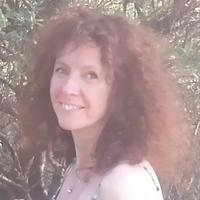




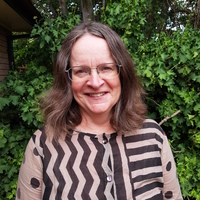
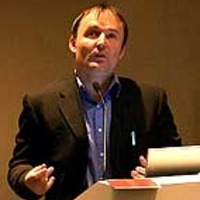
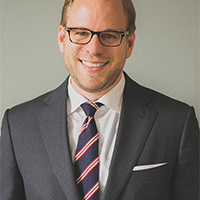
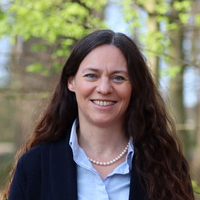
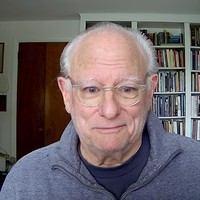
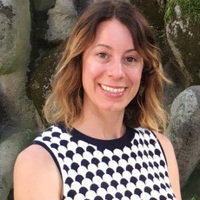
Uploads
Papers by Maria Chiara Liguori
In this paper the Visit Lab experience, Cineca department for data ViSualization through Information Technology, is presented through an overview among the most significant projects carried on mainly in the last two decades. Moreover, lessons learnt and a deeper look into on-going research projects based on interactions with different audiences, including scholars from various disciplines and the general public, has stimulated the design of new virtual heritage digital ecosystems.
order to support a shared candidacy.
The platform, based on a geographic interface, will be accessible through the main social media and will
present historical and artistic data coming from city archives, 3D models of the porticoes, photos and other
contributions from the citizen themselves.
The platform will be available via Web and on mobile devices (iOS and Android).
In this paper the Visit Lab experience, Cineca department for data ViSualization through Information Technology, is presented through an overview among the most significant projects carried on mainly in the last two decades. Moreover, lessons learnt and a deeper look into on-going research projects based on interactions with different audiences, including scholars from various disciplines and the general public, has stimulated the design of new virtual heritage digital ecosystems.
order to support a shared candidacy.
The platform, based on a geographic interface, will be accessible through the main social media and will
present historical and artistic data coming from city archives, 3D models of the porticoes, photos and other
contributions from the citizen themselves.
The platform will be available via Web and on mobile devices (iOS and Android).